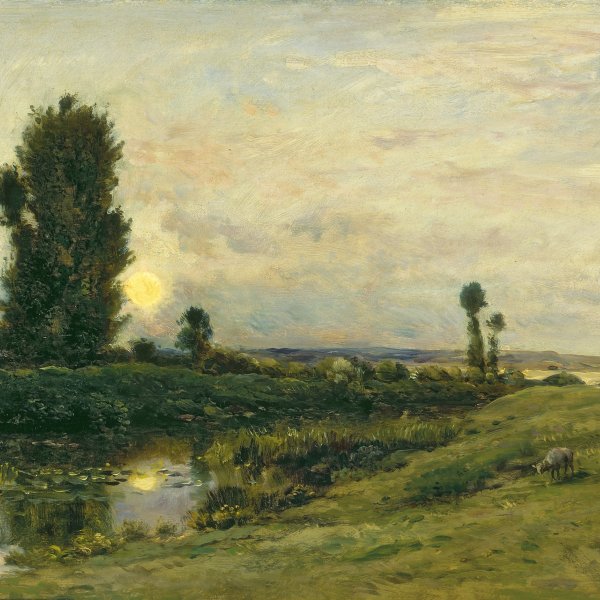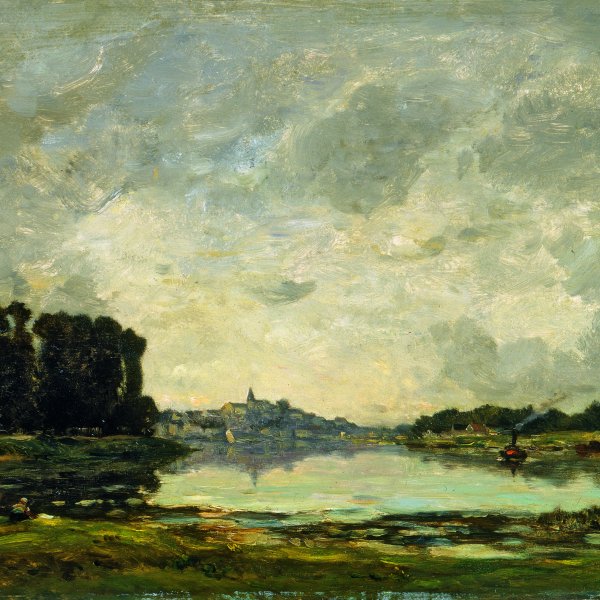Charles-François Daubigny
Charles-François Daubigny was born in Paris on 15 January 1817. He received his first training in art from his father, the painter Edme François, and later studied with Paul Delaroche who specialised in history paintings. The young Daubigny travelled in Italy for six months, after which he returned to work as a graphic artist and illustrator in Paris. He presented his first works at the Salon in 1838 and won a prize for The Harbour at Gylieu ten years later. During the 1840s he worked in Fontainebleau, during which time he strengthened his ties with the painters of the Barbizon School. He met Corot, with whom he became friends and often painted in the open air in the forest of Fontainebleau.
Early in the 1850s, Daubigny published two albums of etchings that established his reputation as a draughtsman. In 1854 he made his first journey to the resorts of Villerville and Trouville on the French Channel coast and spent several summers there over the next years. In 1857, he had a studio boat built, which he christened "Le botin". While travelling the rivers of France in his boat-primarily the Seine and the Oise-he painted a large number of landscapes. Daubigny gained maximum recognition as a painter of the natural world in 1858, the year he exhibited at the Exposition Universelle. He later made two visits to London, in 1866 and 1870. He spent time with Manet in Holland in 1871, and stayed for a year with Cézanne in Auvers in 1872.
Daubigny is regarded as a proto-Impressionist and the link between the Impressionist painters and the Barbizon School. In his landscapes, he focused primarily on images of water, sky, and air, which he rendered masterfully in his paintings. He died on 19 February 1878 in Paris.
Mar Borobia






